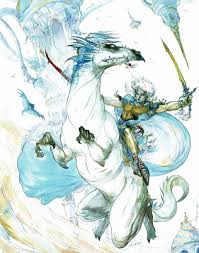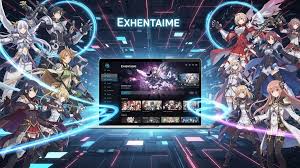Hicetnunc Art: Your Guide to the Tezos Art World
Have you ever heard of a digital art movement that was not only about creativity but also about community and accessibility? Welcome to the fascinating world of hicetnunc art. Born on the Tezos blockchain, this unique space changed how many people thought about creating, collecting, and sharing digital art. While the original platform has since been discontinued, its spirit lives on through its community and the platforms that followed. This guide will walk you through everything you need to know, from its eco-friendly roots and low transaction fees to how you can get involved as an artist or collector. We’ll explore its unique culture, compare it to other marketplaces, and look at what the future holds for this influential art scene.
Key Takeaways
- What is Hicetnunc Art?: It refers to digital art (NFTs) originally minted on the Hic et Nunc platform, known for its minimalist interface and community-driven ethos.
- Tezos Blockchain: This art movement is built on the Tezos blockchain, which is recognized for its lower energy consumption and cheaper transaction fees (known as “gas fees”) compared to Ethereum.
- Accessibility and Community: The platform was designed to be open and affordable, attracting a global community of artists and collectors who valued experimentation and mutual support over high-stakes sales.
- The Legacy Lives On: Although the original site is gone, its open-source code and community have led to the creation of successor platforms like Teia, Objkt, and FxHash, which continue to support hicetnunc art.
- Getting Started is Easy: Participating is straightforward. You need a Tezos-compatible digital wallet and some Tezos cryptocurrency (XTZ) to start collecting or minting your own art.
What Exactly Is Hicetnunc Art?
At its core, hicetnunc art is a term for the non-fungible tokens (NFTs) that were created on the Hic et Nunc platform. The name, which is Latin for “here and now,” perfectly captured the project’s philosophy: making digital art accessible and immediate for everyone. Unlike the high-profile, auction-house-driven NFT scene on Ethereum, Hic et Nunc offered a different path. It was a minimalist, almost stark, platform where the art itself was the main focus. Artists could “mint” (publish on the blockchain) their digital creations for very low fees, and collectors could purchase pieces often for just a few Tezos coins (XTZ). This low barrier to entry created a vibrant, diverse ecosystem where experimentation thrived. Artists weren’t just focused on making a single, high-value piece; they could share series, interactive works, and daily creations, fostering a dynamic and constantly evolving gallery.
The Tezos Advantage: Why It Matters
The choice of the Tezos blockchain was a fundamental reason for the success and unique character of the hicetnunc art scene. In the early days of the NFT boom, most activity was happening on the Ethereum blockchain. However, Ethereum was known for two major drawbacks: high energy consumption and expensive transaction fees, often called “gas fees.” These fees could sometimes cost more than the artwork itself, creating a significant barrier for new artists and collectors. Tezos presented a compelling alternative. It uses a different consensus mechanism called “Proof-of-Stake,” which is significantly more energy-efficient than Ethereum’s original “Proof-of-Work” system. This “eco-friendly” aspect appealed to many artists and collectors who were concerned about the environmental impact of blockchain technology. Furthermore, transactions on Tezos are incredibly cheap, often costing just a few cents. This affordability democratized the creation process, allowing artists from all over the world to participate without a large upfront investment.
How Artists and Collectors Participate
Getting involved in the hicetnunc art ecosystem, both then and now, is a relatively simple process. For artists, the first step is creating their digital work. This can be anything from a static image or GIF to a piece of music, an interactive webpage, or a 3D model. Once the art is ready, the artist connects a Tezos-compatible digital wallet, like Temple or Kukai, to a marketplace. They then upload their file, add details like a title and description, and decide how many editions to mint. The minting process itself is just a few clicks and a very small transaction fee. For collectors, the journey is similar. You start by setting up a Tezos wallet and funding it with some XTZ, the native cryptocurrency of Tezos. You can then browse marketplaces like Teia or Objkt, which house much of the original hicetnunc art collection. When you find a piece you love, you simply click “buy” and approve the transaction in your wallet. The NFT is then transferred to your wallet, proving your ownership on the blockchain.
Evaluating a Piece of Hicetnunc Art
Deciding which hicetnunc art to collect is a personal journey, but there are a few factors you can consider to make informed choices. First and foremost, buy what you love. The primary value should be your personal connection to the artwork. Beyond that, consider the artist. Is their work consistent? Do they have a strong presence in the community? You can often find them on social media to learn more about their process and vision. Scarcity also plays a role. An artwork with only one edition (a 1/1) will generally be more valuable than a piece with 100 editions. You can also look at the artist’s sales history and the secondary market price for their work to get a sense of demand. Finally, explore the context of the piece. Was it part of a significant series or a pivotal moment in the artist’s career? These elements can all contribute to the cultural and monetary value of a piece of hicetnunc art.
Storing and Securing Your Digital Collection
Once you’ve started collecting hicetnunc art, it’s crucial to know how to store it securely. Your NFTs aren’t stored in a folder on your computer like a regular image file; they live in your digital wallet, which acts as your personal gallery and vault. The most important rule of crypto security is to never share your seed phrase (also known as a recovery phrase). This is a unique 12 or 24-word phrase that gives complete access to your wallet. Write it down on paper and store it in a safe, physical location. Do not store it digitally on your computer or phone, where it could be accessed by hackers. For added security, consider using a hardware wallet like a Ledger or Trezor. These are physical devices that keep your private keys offline, making it nearly impossible for anyone to access your funds and NFTs without the device. They connect to your computer only when you need to make a transaction, providing a powerful layer of protection for your valuable collection.
The Unique Culture of the Community
The community that formed around hicetnunc art is arguably as important as the art itself. It was built on principles of mutual support, collaboration, and generosity. On platforms like Twitter, artists and collectors created a “gifting” culture, where users would buy and send art to others as a sign of appreciation. This fostered a welcoming environment that stood in stark contrast to the more competitive and money-driven NFT spaces. Hashtags like #CleanNFT and #TezosArt were used to signal belonging to this eco-conscious and community-focused movement. Many artists found success not through massive one-off sales, but by building a loyal following of collectors who appreciated their ongoing work. This focus on long-term relationships and shared passion is a legacy that continues in the platforms that have succeeded Hic et Nunc. It’s a space where people celebrate each other’s creativity, a theme often explored on sites like https://versaillesblog.com/ when discussing modern creative movements.
Comparing Marketplaces: Hicetnunc’s Legacy
While the original Hic et Nunc website is no longer active, its open-source nature allowed the community to quickly create new platforms to continue its mission. Understanding the differences between these and other major NFT marketplaces can help you navigate the landscape.
|
Feature |
Teia (Hicetnunc Successor) |
Objkt |
OpenSea (Ethereum) |
|---|---|---|---|
|
Blockchain |
Tezos |
Tezos |
Ethereum, Polygon, etc. |
|
Primary Fees |
Low (few cents) |
Low (few cents) |
High (can be $50+) |
|
Marketplace Fee |
2.5% |
2.5% |
2.5% |
|
Ethos |
Community-run, art-focused |
Largest Tezos marketplace |
Commercial, broad market |
|
Energy Use |
Low |
Low |
High (on mainnet) |
This table shows how the platforms carrying the torch for hicetnunc art have maintained the core advantages of low fees and low environmental impact, while a platform like OpenSea on Ethereum serves a different, more commercial market with higher costs.
Common Pitfalls to Avoid
As with any new and exciting space, there are pitfalls to watch out for when you get involved with hicetnunc art. One of the most common is falling for scams or “rug pulls.” Always be cautious of direct messages from strangers offering you a deal that seems too good to be true. Double-check URLs to ensure you are on the official marketplace website and not a convincing fake. Another mistake is over-investing or spending money you can’t afford to lose. The NFT market is highly volatile, and prices can fluctuate dramatically. It’s best to start small and only collect what you genuinely enjoy. Finally, don’t neglect security. Failing to properly secure your seed phrase is the easiest way to lose your entire collection. Take the time to learn best practices for wallet security before you invest any significant amount of money. By being mindful and cautious, you can have a safe and rewarding experience.
Copyright and Licensing in Digital Art
Understanding copyright is essential when dealing with hicetnunc art or any NFT. When you buy an NFT, you are buying a token on the blockchain that proves your ownership of that specific digital item. However, you are not typically buying the copyright to the underlying artwork. The original artist almost always retains the copyright, which means they still control the rights to reproduce, distribute, and create derivative works from the original art. Some artists may explicitly grant additional rights to the collector, such as the right to print the image for personal use or display it in a virtual gallery. It’s crucial to check the terms of the sale or any information provided by the artist to understand what rights you are acquiring. Some platforms and artists are experimenting with different licensing models, but the default assumption should always be that the artist keeps the copyright unless stated otherwise.
A Simple Guide to Getting Started
Ready to dive in? Here’s a simple step-by-step guide to begin your journey with hicetnunc art.
Step 1: Get a Tezos Wallet
First, you need a digital wallet that works with the Tezos blockchain. Popular choices for desktop browsers include Temple Wallet and Spire. For mobile users, Kukai and AirGap are great options. During setup, you will be given a seed phrase. Write this down on paper and store it securely offline. This is the only way to recover your wallet if you lose access.
Step 2: Buy Some Tezos (XTZ)
Next, you’ll need to fund your wallet with Tezos’ native cryptocurrency, XTZ. You can purchase XTZ on major cryptocurrency exchanges like Coinbase, Kraken, or Binance. Once you have purchased it, you will need to withdraw it from the exchange and send it to your personal Tezos wallet address. Your wallet address is a long string of letters and numbers that you can copy directly from your wallet application.
Step 3: Connect to a Marketplace
With your wallet funded, you can now visit a Tezos art marketplace. Teia.art is the direct spiritual successor to Hic et Nunc, run by the community. Objkt.com is another massive marketplace that aggregates listings from across the Tezos ecosystem. When you visit one of these sites, you will see a “Connect Wallet” or “Sync” button. Click this and approve the connection in your wallet extension.
Step 4: Start Collecting!
You are now ready to explore and collect! Browse the art, discover new artists, and when you find a piece you want to own, simply click the buy button. Your wallet will pop up and ask you to confirm the transaction. Once you approve it, the small amount of XTZ will be sent to the seller, and the NFT will be transferred to your wallet, where it is yours to keep.
The Future of the Hicetnunc Legacy
The story of hicetnunc art is a powerful testament to the impact of community and accessible technology. While the original platform may be a part of history, its spirit is more alive than ever. The decentralized, open-source nature of the project meant that its shutdown was not an ending but a transformation. The community-led platforms that rose from its ashes, like Teia, continue to champion the values of creativity, experimentation, and mutual support. The movement proved that an art market doesn’t have to be driven by hype and exclusivity. It can be a vibrant, inclusive, and sustainable ecosystem for artists and collectors around the globe. As the broader world of digital art continues to evolve, the lessons and legacy of Hic et Nunc will undoubtedly continue to influence new generations of creators who are looking for a more authentic and community-driven way to share their work.
Conclusion
The world of hicetnunc art offers a refreshing and accessible entry point into NFT and digital art collecting. Rooted in the eco-friendly and low-cost Tezos blockchain, it fostered a global community that prioritizes creativity and collaboration. While the original platform has evolved, its legacy thrives on marketplaces like Teia and Objkt, where thousands of artists continue to share their work. By setting up a simple Tezos wallet, you can begin exploring this rich artistic landscape, discovering unique digital creations, and supporting artists directly. Whether you are an aspiring digital artist or a curious collector, the “here and now” spirit of this movement invites you to participate in a truly special corner of the art world.
Frequently Asked Questions (FAQ)
1. Is Hic et Nunc still active?
No, the original website hicetnunc.xyz was discontinued by its founder in November 2021. However, because its smart contracts and data are open, the community was able to create mirror sites and successor platforms, most notably Teia.art, which preserved all the original artwork and continues its legacy.
2. Why is Tezos cheaper than Ethereum for NFTs?
Tezos uses a Proof-of-Stake consensus mechanism, which is far more energy-efficient and less computationally intensive than Ethereum’s original Proof-of-Work model. This efficiency translates to much lower transaction fees (gas fees), often costing just a few cents compared to the potentially high and volatile fees on Ethereum.
3. Do I own the copyright to the hicetnunc art I buy?
No. In most cases, when you buy an NFT, you are buying ownership of the token on the blockchain, not the intellectual property or copyright of the underlying artwork. The artist retains the copyright unless they explicitly grant additional rights in the terms of the sale.
4. What kind of art can I find in the hicetnunc ecosystem?
You can find an incredibly diverse range of digital art. This includes static images (JPEGs, PNGs), animated GIFs, short videos, music and audio files (MP3s), interactive and code-based art (HTML), 3D models (GLBs), and even digital literature. The low cost of minting encourages experimentation, leading to a wide variety of creative expressions.
5. Is hicetnunc art a good investment?
Like all art, its value is subjective and the market is volatile. Some pieces have appreciated significantly in value, while many others have not. It is best to approach it as collecting, not investing. You should focus on buying art that you personally love and want to support, rather than expecting a financial return. Never spend more than you are comfortable losing.













Post Comment